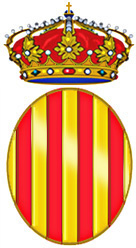...Best of Sicily presents... Best of Sicily Magazine. ... Dedicated to Sicilian art, culture, history, people, places and all things Sicilian. |
by Vincenzo Salerno | ||
Magazine Index Best of Sicily Arts & Culture Fashion Food & Wine History & Society About Us Travel Faqs Contact Map of Sicily |
Though succession to the Sicilian Crown was governed by Salic Law (so there were "queen consorts" rather than queens who actually ruled by right), several Sicilian queens - such as Margaret of Navarre - acted as regents for brief periods. However, in the absence of a son as heir, a king's daughter might be considered his hereditary "repository" and the man she eventually married could claim to rule in the name of her patrimony. This was the case, for example, of Constance Hauteville, daughter of Roger II and wife of Henry VI of Swabia, who claimed Sicily by right of his wife. Viewed in this light, Mary was a significant figure, more than a mere footnote to history. With the death of Frederick III in 1377, young Mary was effectively "kidnapped" by the so-called "Four Vicars," powerful feudal lords who sought to govern Sicily without royal authority by controlling the princess. Frederick III had named Artale of Alagona his daughter's regent and guardian. Alagona was coerced into forming a government with three other "vicars," namely Francis Ventimiglia, Manfred Chiaramonte and William Peralta. Apart from greed, the vicars had their own political allegiances - either to Aragon or to the Papal-Neapolitan influences who still entertained designs on Sicily a century after the Vespers. Their jealous disputes across Sicily often led to destructive raids if not pitched battles. Who Mary wed became an important factor in these designs. In 1379, with the approval of King Peter IV of Aragon, she was kidnapped by William Moncada to prevent her planned marriage to the Duke of Milan. She then resided at Licata until 1382, when she was rescued by an Aragonese fleet. Following a sojourn in Sardinia, she was taken to Aragon, where she wed, in 1390, Martin "the Younger," grandson of Peter IV. Martin ruled, in effect, by right of his wife, who was also Duchess of Athens. Sensing a royal reaction to their traitorous actions, the barons met at Castronovo in 1391, but in typically Sicilian fashion they betrayed each other, with Alagona, Peralta and Ventimiglia negotiating secretly with the king to the exclusion of the Chiaramonte clan. With Martin and his father, also Martin, Mary returned to Sicily in 1392 with a fleet led by Bernard Cabrera. It was time to rein in the disloyal Sicilian barons who had violated their oaths of homage and fealty to the crown, generally eroding the island's economic prosperity in their private civil war. Here we encounter an interesting medieval principle, for disloyalty - however frequent in practice - was intolerable where it led to a feudal vassal usurping royal prerogatives. Specifically, the vicars imposed taxes and annexed crown (demesnial) lands to their own. While it was true that the Chiaramonte family, in particular, had governed reasonably well and built castles which still stand today (among them Fort Sant'Angelo on Malta, the Steri in Palermo, the hilltop fortress at Mussomeli), they had become too powerful and too arrogant. In fact, they had taken control of Palermo, to which Cabrera laid siege for a month. Following this blockade and battle, Andrew Chiaramonte was executed in June 1392 in front of the Steri, his stronghold, which became the residence of King Martin. Seeking to accommodate the nobility, Martin held a parliament at Catania in 1397 and another in Syracuse in 1398. Mary's only son, Peter, died in 1400 at the age of two years. Mary herself died at Lentini, near Syracuse, the following year. She is sometimes referred to as "Mary of Aragon" or "Maria di Catalonia." When Mary's husband, known as Martin I, died in 1409, he was succeeded by his father (who by then was King of Aragon), who became Martin II of Sicily. This signal year marked the true loss of Sicily's political independence forever. Henceforth the island would be administered - for the most part - by viceroys sent from Spain and then Naples; there was rarely anything like "home rule" although the island remained a kingdom. We may speculate that, had young Peter survived to marry and perpetuate his dynasty in Sicily, he would have ruled from Palermo and history would have taken a different course. About the Author: Palermo native Vincenzo Salerno has written biographies of several famous Sicilians, including Frederick II and Giuseppe di Lampedusa. | |
Top of Page |
 Sicily's fourteenth
century was a chaotic one even by Sicilian standards. Ruled since 1282 by
junior branches of the dynasty of Aragon, the island's sovereignty was contested
by rival pretenders and home-grown nobles. It was into this environment
that Queen Mary of Sicily was born in Catania in 1363, daughter of Frederick
III "the Simple" by his first wife, Constance of Aragon.
Sicily's fourteenth
century was a chaotic one even by Sicilian standards. Ruled since 1282 by
junior branches of the dynasty of Aragon, the island's sovereignty was contested
by rival pretenders and home-grown nobles. It was into this environment
that Queen Mary of Sicily was born in Catania in 1363, daughter of Frederick
III "the Simple" by his first wife, Constance of Aragon.